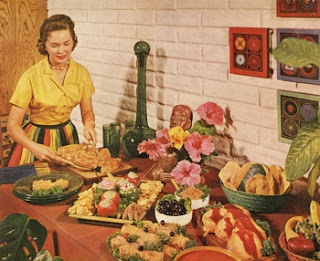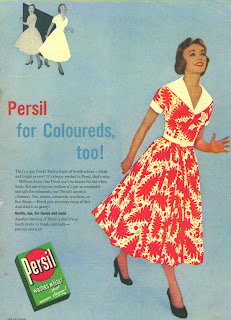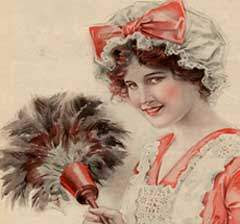Monday, February 18, 2008
Amazing Blog.
Posted by Retro Housewife at 3:19 PM 0 comments
The houses.
Retro home plans have stood the test of time. House designers who are still actively designing new house plans today designed this group of homes in the 1950’s and 1960’s.It's time to stop maligning the humble rambler, the practical, ubiquitous one-story abode that has embodied suburbia for more than half a century.Across the country, the 1950s-era retro homes are desirable real estate again -- and are even being embraced as historic architecture, worthy of preservation.Yes, the humble and prolific one-story home is becoming retro chic.
It's a great style that so many of us relate to and grew up in. But people are taking off the cedar shakes and putting on vinyl siding when they don't have to. Now that ramblers have come of age people should maintain their charm.Yes, you heard right: charm. Once derided for cookie-cutter floor plans and a humble working-class image, the rambler is becoming something suburban real estate is almost never called: retro chic.Sometimes called ranch houses, ramblers typically had about 1,000 square feet of living space -- enough for a modest-sized living room, kitchen and three small bedrooms.Who is buying these retro style house plans? First-time buyers are buying some and a secondary market is the empty nester looking to downsize to a one-story home.
Posted by Retro Housewife at 11:06 AM 0 comments
Lamb Barbecue:
"Come Over for Steak"
"Backyard Barbecue"
The Good Housekeeping Cook Book [1955] offers a chapter titled "The Bountiful Barbecue" (p. 593-600). It offers tips for planning a barbecue, including equipment checklist (asbestos gloves, Monosodium glutamate!), practical notes (choose a menu to fit the grill's space, double-wrap foods in heavy-duty aluminum foil) and safety notes (never heat canned foods in the unopened can). Recommended meats include: big steaks, little steaks, king steak, salt-grilled sirloin steak, barbecued spareribs, heavenly hamburgers, hot franks, grilled ham, barbecued bologna roll, amb and beef alfresco, kabobs, charcoal-grilled chicken, charcoal-grilled duckling, fish fries and barbecues, and shellfish alfresco. Fresh grilled vegetable recipes feature corn, potatoes, sweet potatoes, and mushrooms. Special instructions are provided for grilling canned and frozen veggies. Grilled breads were also popular. Good Housekeeping recommended grilled French & Italian breads , grill-baked breads, rolls and muffins, garlic-buttered slices and a variety of hot grilled sandwiches. Dessert could also be prepared on the grill. Popular items included caramel roast apples, walnut roast, fried marshmallows, baked bananas, and "Marshmallow Treats," (aka S'Mores).
House and Garden's Cook Book [1958] contains instructions for grilling the following items (p. 195-208): Churrasco (South American beef steak), Beefsteak Jerome LePlat (Italian recipe with Hollandaise sauce), Beefsteak Pizzaioula, Sliced Larded Filet on French Bread, Chateaubriand Marchand de Vin, Sate with Steak, Kebabs, Roast Leg of Lamb, Shoulder of Lamb, Lamb Steaks, Oriental Lamb Steaks (soy sauce & ginger), Ham Steak, Plain Hamburgers, Savory Hamburgers (w/chopped onions, olives & mushroom powder), Frankfurters, Grilled Italaian Sausages, Spitted Roast Chicken, Chicken Tarragon, Garlicked Chicken, Ginger Chicken, Baby Chickens on a Spit, Sate Ajam-Chicken on the Spit (Indonesia), Grilled Chicken Hearts, Epicurean Broiled Turkey, Broiled Turkey Flambe, Broiled Duckling, Broiled whole Fish, Fish Mixed Grill, Rotisserie Veal with Kidneys, Roast Leg of Lamb Hong Kong, Shish Kebab, Pork Loin with Sherry, Pork Shoulder Robert, Loin of Pork California Style, Port Tenderloin Orleans, Spareribs Island Style (w/pineapple), Spareribs German Style (w/sauerkraut), Suckling Pig on a Spit, Roast Chicken Pierre (w/sherry), Chicken Far East (w/cashews & peanut butter), Long Island Duckling Gourmet and Goose Montmartre
Posted by Retro Housewife at 10:58 AM 0 comments
1933 Betty Crocker Bisquick Cookie Recipes!
1/2 cup shortening
1 cup butter
2 cups Bisquick
Mix Bisquick, sugar and lemon rind. Beat eggs and reserve about 1/3 for brushing tops of Bisquicks. Add remainder to the Bisquick mixture. Mix well and roll out 1/2 inch thick. Cut with small cutter and place on greased pan. Brush tops with remaining egg. Bake in moderately hot oven 400 - 425 F. for 8 minutes. When cool ice with Almond Icing. This makes 16 - 18 Bisquicks.
Almond Icing
A fancy recipe, nice enough to give as gifts in a cookie tin.
1/2 cup packed brown sugar
Heat oven to 350. Mix brown sugar and butter. Stir in 1 1/2 cups baking mix. Press in ungreased retangular pan, 13x9x2 inches. Bake 12 minutes.
Beat eggs in a medium bowl with a fork, mix in white sugar and almond extract. Stir in coconut, almonds and 3 tablespoons baking mix. Spread over the baked layer. Arrange cherries on top. Bake until golden brown and set, 22 to 25 min. Cool and cut into bars about 2 1/2 inch squares. Makes 36 bars.
3/4 cup packed brown sugar
Heat oven to 350. Mix brown sugar, butter, vanilla and egg yolk with a fork in an ungreased rectangular pan 13x9x2. Stir in baking mix until moistened, (mix will be crumbly) Press mixture evenly in pan. Bake till a light brown, 16 to 18 minutes. Immediately sprinkle chocolate chips over top. Let stand until chocolate chips are softened, 3 to 4 minutes. spread evenly. Sprinkle with peanuts. Cut into bars. Makes 32 bars. tip: I like it better with chopped peanuts.
2 squares unsweetened chocolate
Melt over low heat chocolate and margarine. Combine Bisquick and sugar. Stir in egg, milk, chocolate mixture and vanilla; blend well. Fold in coconut. Drop by spoonful onto ungreased cookie sheet. Bake at 375 for 12 to 14 minutes. Cool, then frost.
Posted by Retro Housewife at 10:51 AM 0 comments
Tuesday, February 12, 2008
When we used to care....
Silhouette Soft but wide shoulders, corseted waist, and full hips were hallmarks of 50s wear, but silhouettes were more varied. On these outlines, women wore a trim bodice and very full knee-length skirt, or a fitted short, boxy jacket or blouse with a pencil-straight skirt. One style that hid all the rest, literally, was the cocoon-like sacque dress and coat, which fitted the shoulders and bloomed at the waist and hips.
Common Designs
One- and two-piece dresses with small-collared, fitted blouses and full, pleated knee-length skirts
More casual dresses with tied shoulder straps or halter straps, boned bodices and the quintessential circle skirt
Similarly fitted eveningwear that had a heart-shaped opaque strapless bodice with a sheer silk or nylon overbodice, usually sleeveless or long-sleeved
Prom night evening gowns of pastel nylon tulle, usually bedecked with yards of tulle trims, ruffles, and velvet bows
Long-sleeved button-up sweaters with a plain, ribbed neck, often beaded or appliqued
Fabrics Available Natural fibers (linen, cotton, wool, silk), rayon, acetate, nylon, modacrylic, acrylic, polyester, and spandex. For daytime, the most common fabrics were in naturals, rayon, nylon, poly-cotton blends, and sometimes acrylic and acetate; sweaters were wool (cashmere for status) or acrylic knit. Brocades, satin, velveteen, taffeta, nylon net, tulle, and chiffon in both natural and synthetic fabrics were reserved for evening. Materials were usually light- to medium weight, and sheer fabrics were common, but not usually as the main material of a garment (except in tulle evening gowns, and some day dresses and blouses).
Popular Colors and Prints Day and casual wear saw neutral solids and floral prints, along with dazzling western and peasant-styled clothing, sometimes hand-painted onto circle skirts or scarves. Futuristic prints of all types appeared in bright, abstract designs apropos of the atomic era. Also, dark tone-on-tone abstracts in brown, gray or navy were popular winter prints.
For evening, both solids and classic floral brocades were common; the effect of overlaying contrasting sheer chiffon or net on a flesh-colored underdress was daringly popular. Colors in the evening were now both subtle and bold, as peacock blues and hot pinks became acceptable.
Trims and Detailing The most obvious trim of daywear is the beading of sweaters and occasional extravagance on detailing circle skirts. Circle skirts and novelty garments were sometimes incredibly ornate, with applique, rickrack, screen-printing, sequins, or glitter. A very common feature on 50s dolman-sleeved dresses is the small, nonfunctional, diamond-shaped underarm panel. Flutter hems, which were curved evenly up and down, and scalloped edges appeared occasionally in full-skirted day and evening dress. Most evening detail appeared in sculpted pleats and necklines, or toned-down rhinestones and corde`, which added style without being cumbersome or uncomfortable.
Hemlines Day and Night Daywear hems fell to the knee or a little below it. Evening gowns could be floor-length, but the cocktail dress also flourished at knee and upper-calf length.
The Latest Fads
Bobby soxers (Peter Pan collared blouse, poodle skirt, scarf-tied ponytail, and saddle shoes)
James Dean look-alikes, hoods, and motorcycle gangs
Modeling became a respectable job for young ladies (more)
Cat-eye glasses
Beatniks
Hawaiian shirts
Barkcloth in casual wear
Ethnic scene prints in day and leisure wear
Americana prints with rustic scenes or patriotic eagles, etc
Innovations New fabrics: acrylic (1950), polyester (1953), and spandex (1959)
Posted by Retro Housewife at 2:42 PM 0 comments
Sunday, February 10, 2008
Home Economics High School Text Book, 1954
Have dinner ready. Plan ahead, even the night before, to have a delicious meal, on time. This is a way of letting him know that you have been thinking about him and are concerned about his needs. Most men are hungry when they come home and the prospect of a good meal are part of the warm welcome needed.
Prepare yourself. Take 15 minutes to rest so that you'll be refreshed when he arrives. Touch up your makeup, put a ribbon in your hair and be fresh-looking. He has just been with a lot of work-weary people. Be a little gay and a little more interesting. His boring day may need a lift.
Clear away the clutter. Make one last trip through the main part of the home just before your husband arrives, gather up schoolbooks, toys, paper, etc. Then run a dust cloth over the tables. Your husband will feel he has reached a haven of rest and order, and it will give you a lift, too.
Prepare the children. Take a few minutes to wash the children's hands and faces (if they are small), comb their hair, and if necessary change their clothes. They are little treasures and he would like to see them playing the part.
Minimize all noise. At the time of his arrival, eliminate all noise of the washer, dryer, dishwasher, or vacuum. Try to encourage the children to be quiet. Be happy to see him. Greet him with a warm smile and be glad he is home.
Some don'ts: Don't greet him with problems or complaints. Don't complain if he is late for dinner. Count this as minor compared with what he might have gone through that day. Make him comfortable. Have him lean back in a comfortable chair or suggest he lie down in the bedroom. Have a cool or warm drink ready for him. Arrange his pillow and offer to take off his shoes. Speak in a low, soft, soothing and pleasant voice. Allow him to relax and unwind.
Listen to him. You may have a dozen things to tell him, but the moment of his arrival is not the time. Let him talk first.
Make the evening his. Never complain if he does not take you out to dinner or to other places of entertainment. Instead, try to understand his world of strain and pressure, his need to be home and relax.
The Goal: Try to make your home a place of peace and order where your husband can renew himself in body and spirit.
Posted by Retro Housewife at 8:24 AM 1 comments
Saturday, February 9, 2008
So much to do, so little time!
Posted by Retro Housewife at 7:57 PM 0 comments
Posted by Retro Housewife at 7:37 PM 0 comments
Straight from the 1950's
Posted by Retro Housewife at 7:26 PM 1 comments
Keeping House
2. Make a schedule for periodic jobs, such as cleaning baseboards and organizing cabinets. You may want to go through your cabinets every six months, for example. I find it quite helpful to have set days for each job...for example, every Sunday, change sheets, every Monday, wash floors..so on. It is much less intimidating than cleaning the whole house at once.
3. Wipes aren’t just for babies. You can find antibacterial wipes, furniture wipes, glass wipes, and more. Take advantage of these inexpensive cleaning aids. Wiping down the bathroom sink everyday with a wipe can permit you to go longer between full cleanings. But, baby wipes are handy for quick cleanups anywhere.
4. Do it now! This phrase is the mantra of organizational gurus, who know that the key to keeping one’s home clean is to do every task as soon as it needs to be done. Putting that ice cream bowl in the sink now is much easier than putting three away tomorrow, and alot less gross.
5. Simple is better. Keep things simple, and cleaning will be easier. Stick to one illustrated book on your coffee table, for example, instead of an arrangement of figurines. The former will be easier to dust and keep tidy, making your job to clean, easy.
6. It’s okay to cut corners – sometimes. You can vacuum around the furniture many times, but you do need to do a good job and move everything once or twice a month. Vacuuming along the walls and furniture is easier to do monthly than annually during a big cleaning day.
7. If you haven’t used something in a year, throw it out. If you’ve looked at that green sweater in your closet and shrugged everyday this winter, you have moved passed the sweater. Just get rid of it, and you won’t have to worry about it anymore.
8. When you find a problem, fix it. Many people tend to just allow cleaning problems to build up. If you’re always tripping over the kids’ shoes when you come in, put a shoe rack at the front door. Move the cleaning supplies so they’re easier to reach. Put the broom in a better spot. Fixing problems can make cleaning go much more smoothly. If you have stairs, leave a basket near them, then fill it up with things that need to go upstairs..bring it on your next trip up, and when you are upstairs, fill it with things that need to go down. You get the idea!
9. Have a filing system for paper. Make it a point to deal with paper as soon as it comes in the house. Sign papers. Pay bills. Toss junk mail.
10. Keep a laundry basket in frequently used rooms. You can toss in items that go in other rooms of the house to make cleaning much easier. Then just take the basket around at the end of the day and deposit items in the right spot.
Posted by Retro Housewife at 7:13 PM 0 comments
Husbands and Wives
Posted by Retro Housewife at 6:33 PM 1 comments
Cooking the day away.
Posted by Retro Housewife at 6:25 PM 0 comments











